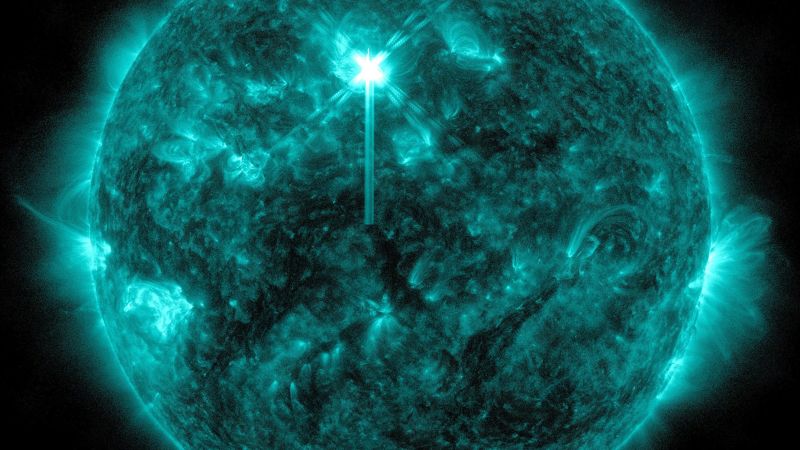
On May 11, 2024, the aurora borealis, or northern lights, put on a spectacular show across the United States. This rare event was caused by the strongest solar storm in over 20 years and resulted in the unusual appearance of the aurora farther south than usual. The solar storm was classified as a level 5 on Friday and provided clear views of green, purple, and red arcs across the skies. The Space Weather Prediction Center expected similar conditions to continue on Saturday night, with potential for even better views depending on weather conditions.
The powerful solar flare activity made the aurora borealis visible unusually far south, with some star gazers catching sight of streaks of green, purple and red arcing across the skies. Those conditions are expected to continue, with the Space Weather Prediction Center suggesting that depending on how everything evolves, Sunday night might be even better than Saturday for views of the aurora. In areas with clear skies, the display on Sunday could be similar to what people witnessed on Friday.
The northern lights have been visible across the northern third of Colorado and are expected to continue being visible throughout the weekend. The best viewing conditions for the Northern Lights in Colorado will be between midnight and 3 a.m. on Saturday morning, although some clouds may be present across the northern mountains and portions of Colorado's Front Range.
The solar storm is also affecting Earth and may cause disruptions in communications, power grids, navigation, radio and satellite operations. The Space Weather Prediction Center observed extreme geomagnetic storm (G5) conditions on Friday evening. Scientists have observed multiple strong flares emitting from a large cluster of sunspots on the solar surface since Wednesday, with at least seven coronal mass ejections being observed and expected to continue through Sunday.
While the northern lights may be a breathtaking sight to behold, it's important not to engage in any activities that could put oneself or others in danger while attempting to view them. Always prioritize safety and follow all local guidelines when observing natural phenomena.








